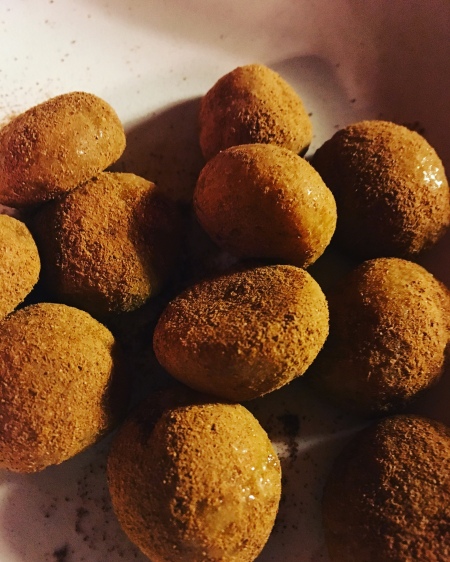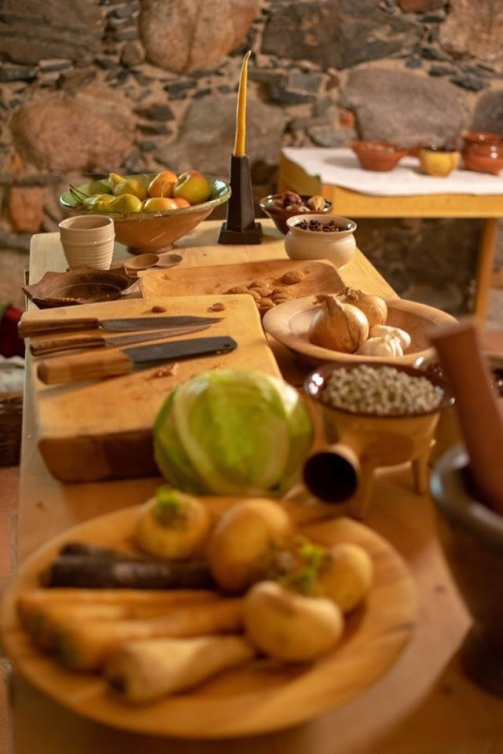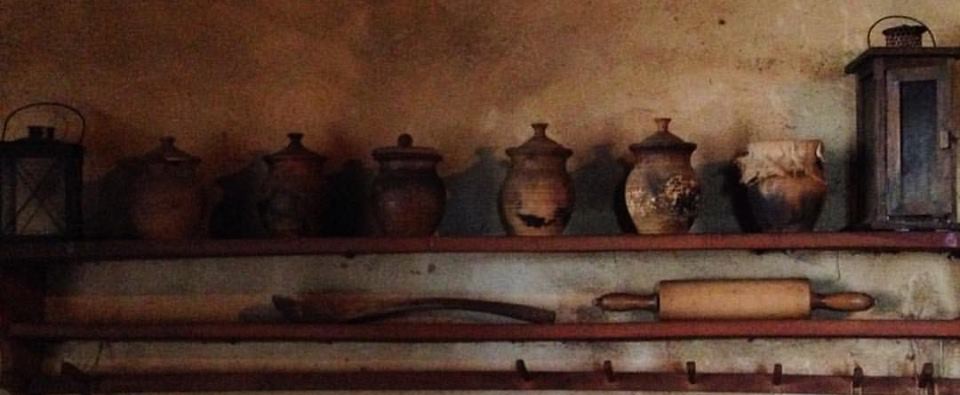Our reenactment group Merry Swan together with Häme Castle and friends arranged an event: Medieval food, everyday life and luxury, during the first weekend of December. I was displaying all sorts of vegetables and fruits that were most likely eaten in the castle during Medieval times. Representing luxury, I had payne ragoun and gyngerbrede for all the visitors to taste if they wanted to know how medieval delicacies tasted like. Having something to taste at the display was a huge success. Mervi had also baked different bread’s for guests to taste with homemade butter. She asked the spectators about how wealthy they were and then when hearing the response gave them either fine wheat bread, rye bread or barley bread all made from sourdough. She also baked some of bread at the site. Ah so much fun!
Anyway I have tested this recipe once and it worked. Many people have been asking for the recipe so I will publish it now although normally I will spend hours and hours to read and test the recipe. So here it is..
Suomenkielinen resepti löytyy yläpalkista!
Gyngerberde – Gingerbread

Take a quart of hony & sethe it, skeme it clene; take Safroun, pouder Pepir & throw ther-on; take gratyd Brede make it so chargeaunt that it wol be y-lechyd; then take pouder Canelle & straw ther-on y-now; then make yt square, lyke as thou wolt leche yt; take when thou lechyst hyt, and caste Box leves a-bouyn, y-stykyd theron, on clowys. And if thou wolt haue it Red, coloure it with Saunderys y-now.
Serves about 10
- 450 g honey
- 180 g dried bread crumbs
- pinch of saffron
- 1 teaspoon of ginger (optional)
- ½ teaspoon fine ground long pepper (or black pepper)
- 1 ½ tablespoon of cinnamon
- (1 teaspoon of sandalwood powder)
- whole cloves to garnish
- Bring the honey boil in a pot. Keep simmering the honey about 5 minutes. Stir and make sure it will not burn.
- Skim the surface.
- If you are using sandalwood to color the dish add it. Add saffron and pepper.
- Add dried bread crumbs and stir well.
- Take the mixture off the heat and let it cool.
- Sprinkle the cinnamon on a plate or cutting board where you are forming the pieces.
- When the mixture is not too hot you can cut it in pieces and form balls or use cutters to make different kinds of shapes. Dust the pieces with cinnamon or just roll the balls on the cinnamon.
- Garnish with whole cloves if you wish.
Comments: Since these gingerbreads are not baked, they are more like candies than actual biscuit or cake. The dough feels like marzipan but it can lose its form a bit in storage. Also the temperature will affect the shape after a while. The ginger is actually missing in the recipe but the name suggests that it might have added to the dish anyway. Although this is not certain. Some other similar gyngerbrede recipes does have ginger in it.
I decided not use the sandalwood either for coloring the gyngerbrede red this time. I do have sandalwood powder but I made this dish for the Häme Castle event and for the spectators to taste so I did not want it to be too exotic. Next time I need to test with the sandalwood and probably update the recipe after that. So at this point I don’t know how much sandalwood would be enough to color the dough, but my guess is that 1 teaspoon would do the trick.. perhaps less. Anyway the sandalwood is as the recipe says optional.
I had no boxwood leaves for to garnish the gyngerbrede (I don’t know if and where to get the leaves here in Finland). I am not completely sure but I read that they might be poisonous so I would omit them. You can use whole cloves to garnish as the recipe says.
Source:
- Take a thousand eggs or more, A collection of 15th century recipes, Cindy Renfrow (Harleian MS.279, c.1420)

